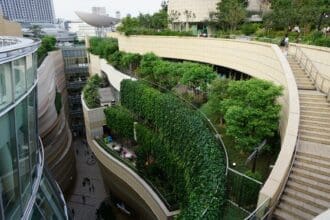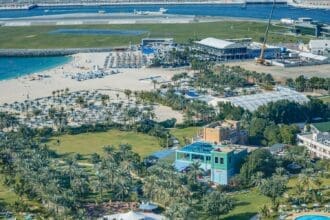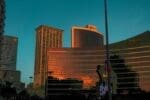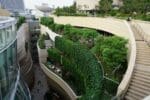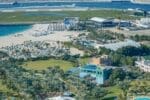In the world of mega-projects, there are two primary models for economic transformation. The first is the “Disney” model- the methodical build-out of an entire entertainment ecosystem that becomes a sustainable economic engine. The second is the “Casino” model- rapid, explosive growth driven by the gaming industry. Until recently, these were just theoretical analogies for the UAE. Not anymore. With the official announcement of a Disney Theme Park Resort on Yas Island, Abu Dhabi , and the construction of Wynn Al Marjan Island in Ras Al Khaimah , the UAE is becoming the first place in the world to simultaneously and deliberately implement both models. For investors, this is an unprecedented situation that places Dubai, located right in the middle, at the epicenter of the region’s greatest real estate market transformation.
Content
Lesson #1: The Disney Model Arrives in Abu Dhabi – The Engine for Sustainable Growth
When Walt Disney World opened in Florida, it didn’t just create a theme park; it anchored an entire regional economy. An Oxford Economics analysis shows that in 2022, the resort generated a $40.3 billion economic impact and supported 263,000 jobs in the state. This model is a long-term play that creates a diversified ecosystem and provides sustainability to the property market, shielding it from sharp downturns.
Until now, Dubai has successfully applied a similar strategy with its own attractions. But the news of the partnership between Disney and Miral to build the world’s seventh Disney resort on Yas Island, Abu Dhabi, changes everything. This is no longer an analogy; it’s a reality. The project will combine “Disney’s iconic stories with Abu Dhabi’s vibrant culture” and become an “oasis of extraordinary entertainment at this crossroads of the world”. Located just 50 minutes from Dubai, this mega-project will create a massive new tourism flow focused on family-friendly, multi-day stays, boosting demand for housing and short-term rentals throughout the entire corridor between Abu Dhabi and Dubai.
Lesson #2: The Macau Model Plays Out in Ras Al Khaimah
In 2002, Macau liberalized its gaming sector, and the result was an economic metamorphosis. The property market exploded, with prices in some areas increasing five-fold in ten years. This model demonstrates the unparalleled speed at which legalized gaming can stimulate an economy and property values.
This very model, albeit in a much more controlled environment, will be implemented with Wynn Al Marjan Island in Ras Al Khaimah. The $5.1 billion project will be the first with legal gaming in the UAE and is set to open in early 2027. Unlike Macau, the UAE is taking a proactive approach by establishing a federal regulatory authority (the GCGRA) before the casino opens to manage risks. This project will attract an entirely new segment of high-net-worth tourists seeking luxury entertainment and gaming.
Dubai: The Geographic and Investment Hub of Two Worlds
The uniqueness of the situation lies in its geography. Dubai is less than an hour’s drive from both the future Disney Resort in Abu Dhabi and the Wynn casino resort in Ras Al Khaimah. This makes it the natural hub that will serve both tourism flows. Imagine a family spending several days at Disney, after which the parents leave the children with a nanny and head for a weekend at Wynn. Where are they most likely to be based? In Dubai, which offers the greatest variety of hotels, restaurants, and retail.
This dual strategy creates three distinct but interconnected opportunities for investors:
- Opportunity 1 (High Growth): Investing in Ras Al Khaimah. Similar to the early days in Macau, the opening of Wynn Al Marjan Island will likely trigger a sharp appreciation in property values in the emirate. This is an opportunity for investors seeking rapid capital gains.
- Opportunity 2 (Sustainable Growth): Investing in Abu Dhabi (Yas Island). The arrival of Disney will create long-term, stable demand for property, similar to Orlando. This is a strategy for investors with a longer horizon, seeking sustainable yields and appreciation.
- Opportunity 3 (Synergy and Stability): Investing in Dubai. Dubai will experience the powerful “halo effect” from both projects. The increased and diversified tourism flow will support the market in the long run. This is the most balanced strategy, benefiting from the growth of both models without being dependent on just one. The entire UAE real estate market will feel a positive push from this unprecedented synergy.
Key Indicators to Watch
The smart investor must monitor developments on all three fronts:
- “Wynn Model” Indicators: Progress on the Wynn Al Marjan Island project, news from the GCGRA regulator, and real estate price data in Ras Al Khaimah.
- “Disney Model” Indicators: News from Miral and Disney on the Yas Island project milestones, infrastructure development around Abu Dhabi, and local property price data.
- “Dubai Hub” Indicators: Tourism figures, hotel occupancy rates, passenger traffic at DXB airport, and property sales volumes in key Dubai communities.
In conclusion, the UAE is not just copying successful models; it’s implementing them simultaneously to create something unique. For investors, this means the future of the property market isn’t a gamble, but a calculated opportunity for growth in a region that plays the game by its own, intelligent rules.
You might also like:
- Off-plan Property in Dubai: Pros and Risks for Investors
- Apartment investment: is a studio, one-bedroom or two-bedroom the best choice?
- Renovating on a Budget: How to Increase Rent and Property Value
This post is also available in: Български


